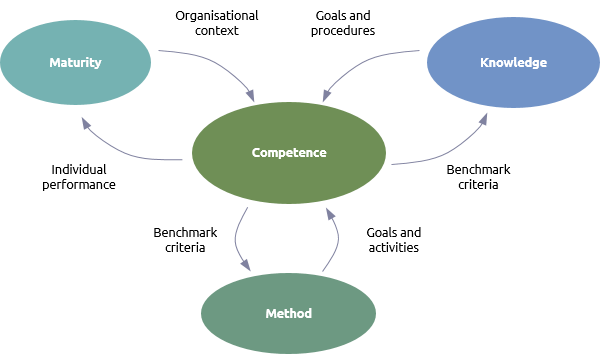Praxis contains three groups of competencies. Delivery competencies are based on the delivery section of the knowledge section, process competencies are based on individual processes defined in the method and interpersonal competencies address the corresponding section of the knowledge section.
There is only one competency for each function or process and in practice each of these will need to be adapted to suit the setting in which it is to be applied. That means that a competency must be aligned with the complexity of the work, the environment of the work and whether it is to be managed as a project, programme or portfolio. Some suggestions on tailoring are included alongside each competency but these are simply indicative and not comprehensive. There is more information about adapting competencies in the article on tailoring Praxis.
The level of individual performance is aligned with level 2 in the capability maturity model since this requires competent staff. Competencies are aimed primarily at a P3 manager role and will need to be adapted for other roles such as sponsor, assurance or support.
The maturity model provides an organisational context in which the individual competencies need to be applied.

The knowledge and method sections provide the overall structure of the competency framework and a more detailed information for the knowledge and performance criteria. In return the performance criteria defined in the competencies provide benchmarks of individual performance.
Competencies are divided into three sections:
- Objectives
-
This section lists the specific goals that the competency is designed to achieve.
- Performance criteria
-
These are the criteria that someone must effectively perform to be deemed competent in achieving the goals.
- Knowledge and understanding
-
In order to effectively exhibit the performance criteria someone must have knowledge and understanding of the relevant principles, procedures, tools and techniques.





